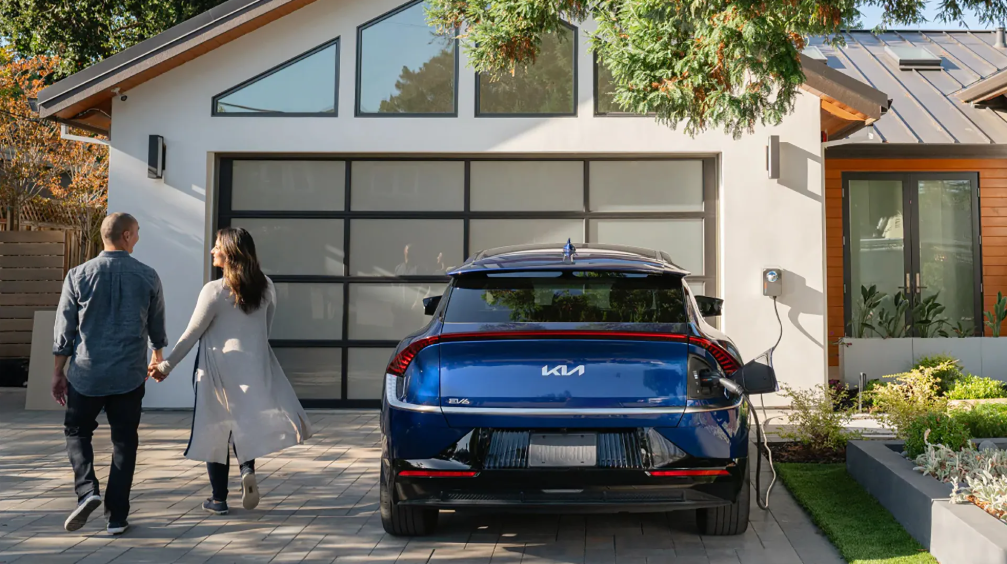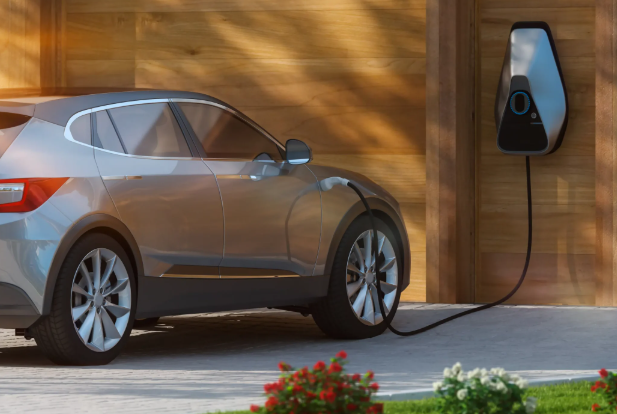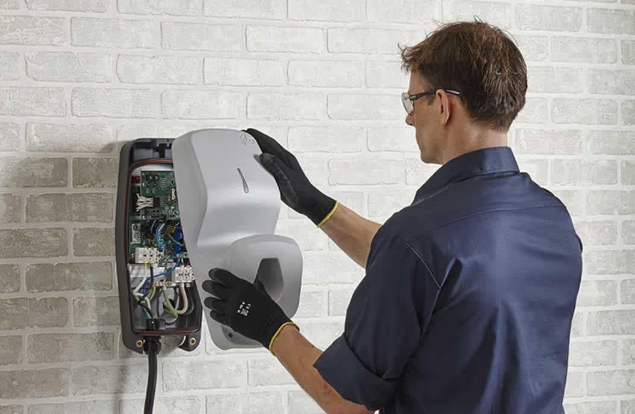Part 3 of a 3-part series on EV charging infrastructure challenges and solutions.
Imagine a world where finding an EV charger is as easy as finding a coffee shop. Not because there’s a huge station on every corner, but because every neighborhood has dozens of small chargers hosted by ordinary people and local businesses. This is the vision of a decentralized, community-powered EV charging network. In this final part of our series, we look at how platforms like JuiceNet and others are making this vision a reality. We’ll explore how a peer-to-peer charging network can expand access, slash costs, and boost the resilience of our charging infrastructure. It’s a forward-looking peek into an EV charging ecosystem that grows organically from the ground up.
A New Charging Paradigm: Decentralized and App-Powered
Traditional public charging infrastructure is centralized – a few companies building large stations and owning the whole process. The new paradigm flips that. Decentralized charging networks treat each privately owned charger (at a home, business, or anywhere) as a node in a larger system. Technology is the enabler here: with a smartphone app and an internet connection, a homeowner’s garage charger can become part of a nationwide network accessible to any driver.
Think of it like Airbnb or Uber but for EV charging. The platform connects those who have a charging point with those who need a charge. One such platform is JuiceNet, a community-driven, peer-to-peer network designed to eliminate range anxiety by providing accessible charging solutions for EV drivers everywhere. In plain terms, JuiceNet’s app lets you find a nearby resident or business who is offering their charger, reserve a time, and go charge your car through a few taps on your phone. If you have a charger, you can list it and make it available to others at times you choose. It’s sustainable, convenient, and built on the power of community.
Here’s how these app-powered networks typically work:
- Find a Charger: EV drivers open the app (say, JuiceNet or a similar service) and see a map of available chargers around them. These could be in someone’s driveway, a coffee shop’s parking lot, an apartment building, etc.
- Reserve & Pay: The driver selects a convenient charger, maybe one that’s available during the needed time, and reserves a slot. Payment is handled in-app, no fumbling with credit cards at a station. The app usually shows the price per kWh or per session set by the host, which tends to be reasonable and clearly stated.
- Plug In & Charge: The driver arrives at the location and initiates the charging session via the app. Depending on the setup, the app might unlock the charger or give a code to access it. Then it’s as simple as plugging in. When done, the app handles billing, and the driver can leave a rating or review for the host.
- Community Feedback & Trust: Over time, hosts build reputation (for reliable equipment, good location, etc.) and drivers build trust. The platform ensures everyone plays by the rules (for example, penalizing no-shows or people who overstay their reservation)
Platforms like JuiceNet emphasize not just the tech, but the community ethos. They were “born out of a desire to reduce range anxiety and augment the existing charging infrastructure, recognizing that the current system isn’t enough, and empowering regular people to be part of the solution.
Why a People-Powered Network Wins
What’s so great about a decentralized, people-powered charging network? Let’s break down the key advantages and how they directly address the failures of the old public charging model:
- Massive Expansion of Charger Availability: Remember how we noted there are roughly 10x more private chargers than public ones out there? A peer-to-peer network taps into that huge resource. Suddenly, the “charging universe” isn’t limited to a few thousand public stations – it could be millions of potential outlets. This can dramatically reduce the problem of finding a charger. For instance, a startup called PowerPod, by embracing a decentralized approach, was able to integrate over 3,000 shared chargers across multiple countries (in Asia and beyond) in a short time. That’s 3,000 new points of charging service that traditional top-down planning might have taken years to deploy. As more EV owners install home chargers (which is happening with every new EV sold), the network can keep growing organically by inviting them in.
- Lower Costs for Everyone: Decentralized networks have inherently lower overhead. There’s no need to purchase land, build expensive plaza-style stations, or maintain a fleet of proprietary chargers – the hardware is owned by individuals who’ve already installed it. Platforms like JuiceNet typically charge a small service fee for matchmaking and maintenance of the app, but it’s modest. This means more of the fee goes into the electricity and a bit of income for the host, rather than corporate overhead. Drivers often pay less per charge as a result. And hosts can price their charging fee below commercial stations and still come out ahead (since they’re likely just covering their electricity cost and a little extra). Overall, charging via a community network tends to be more affordable than relying on big public chargers – helping keep EV ownership cost-effective.
- Improved Reliability and Uptime: One might think having a bunch of individual owners in charge of maintenance could introduce inconsistency. But consider this: an individual host has a direct interest in keeping their equipment functional (especially if they’re earning from it), and if one charger is down, it doesn’t bring down the whole network. In a decentralized system, there’s no single point of failure. If one neighbor’s station has an issue, a driver can likely find another option nearby. Also, the apps often allow drivers to see ratings or comments. If a charger was offline for someone, that info can be shared, prompting the host to fix it or the network to pause listing it until it’s fixed. Compare that to arriving at a commercial station where 2 out of 4 plugs might be broken with no warning (as we saw in Part 1). In a sense, the community policing and flexibility of many small nodes can create a more reliable aggregate network. Additionally, future iterations of these networks could use sensors or automatic reporting to quickly flag issues. And because hosts are distributed, the “uptime” metric isn’t managed by one company claiming 95% uptime across the board (which often doesn’t match reality); instead, it’s managed by the wisdom of the crowd and the competitive nature of hosts wanting good reviews.
- Resilience and Grid Benefits: A decentralized charging network can also be more resilient in emergencies. Think about a natural disaster or a big power outage. A large charging station might go offline completely. But in a neighborhood network, some fraction of chargers might still have power (some homes have solar panels and batteries, for example, allowing charging even if grid is down. While this is a bit beyond standard charging, it illustrates how having EVs and chargers spread throughout communities can create a flexible web of energy assets, not just consumption points. Moreover, charging loads can be smarter distributed – instead of a 10-car station drawing 500 kW at once in one location (a big strain on the local grid circuit), you might have 10 cars charging on 10 different neighborhood transformers, a gentler impact that utilities can manage with smart scheduling. The platform could even coordinate charge times to avoid local peak demand spikes. In effect, community networks can work with the grid, not overload it, especially as smart charging tech and integration improve.
- Faster Expansion, Less Red Tape: Building a large public charging station involves permits, construction, utility upgrades, and lots of capital. It can take a year or more from planning to operation. In contrast, signing up a new home charger to a network is quick. There are already thousands of compatible home chargers. It’s mostly a matter of outreach and maybe some minor equipment upgrades. This means a decentralized network can scale up fast. It can also adapt to where demand is. If a particular town suddenly sees more EVs, locals can quickly add their chargers or install new ones with the knowledge that they can share them and maybe recoup costs. It’s a very agile model compared to the slow rollout of public infrastructure.
The Road Ahead
In the coming years, your EV’s navigation system might integrate these community chargers natively. Instead of only showing “official” charging stations, it could also suggest, “Hey, there’s a JuiceNet charger available 2 blocks from your destination, you can reserve it now.” That kind of seamless integration will further mainstream the concept.
We should also acknowledge that the community model complements, rather than outright replaces, other charging. We will still have highway fast-chargers for road trips and major travel corridors – those are critical for long-distance travel and for commercial vehicles. But the day-to-day charging for most people could very well pivot to this distributed network. Even Tesla, known for its proprietary Superchargers, is starting to open up and might allow its home chargers to be part of sharing networks in the future, especially as it joins the broader charging standard.
Imagine the resilience: if one day every neighborhood has multiple homes offering charging, then as an EV driver you’d rarely worry about finding power. It would be similar to relying on Wi-Fi. You don’t stress about finding internet because it’s almost everywhere now in communities. That’s the kind of ubiquity a peer-to-peer charging network aims for. It takes what is currently a weakness (so many disparate private chargers) and turns it into a strength (a dense mesh of charging availability).
A people-powered, app-enabled charging network can address availability, reliability, affordability, and scalability all at once. It leverages existing resources, encourages community cooperation, and aligns with how EV owners actually want to charge. The public charging station woes we discussed in Part 1 aren’t going to disappear overnight, but these new models provide a compelling path forward. With companies like JuiceNet pushing the envelope, and with the support of forward-thinking policymakers and enthusiastic EV communities, the vision of a decentralized charging future is within reach.
The next time someone asks, “Where will all these electric cars charge?” You can tell them: everywhere, at home, next door, across the street – we’ll all share the load. That’s a future that puts power truly in the hands of the people






